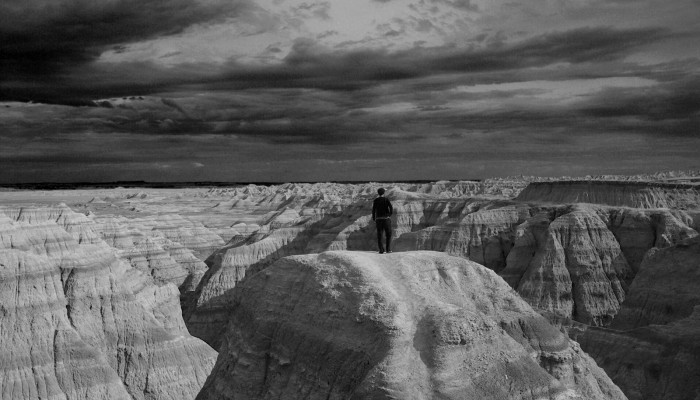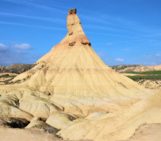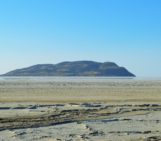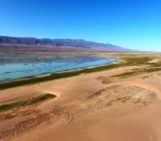
Layer upon layer of sand, clay and silt, cemented together over time to form the sedimentary units of the Badlands National Park in South Dakota, USA. The sediments, delivered by rivers and streams that criss-crossed the landscape, accumulated over a period of millions of years, ranging from the late Cretaceous Period (67 to 75 million years ago) throughout to the Oligocene Epoch (26 to 34 million years ago). Interbedded greyish volcanic ash layers, sandstones deposited in ancient river channels, red fossil soils (palaeosols), and black muds deposited in shallow prehistoric seas are testament to an ever changing landscape.
Fast forward to 500,000 years ago and the landscape was very different. The Cheyenne River diverted the flow of the ancient small streams and rivers down its own river bed, in a geomorphological process called capture. The destructive power of the river dominated over the deposition of sediment. The river cut through the layers of sediments and produced the stunning landscape preserved today.
“The picture was taken in 2009 as I made a road trip with my brother across the United States, from Chicago to San Francisco,” explains Iain Willis, author of today’s Imaggeo on Mondays photograph. “After a long day’s drive, we approached the edge of the Badlands in the late afternoon after turning off route 90. I took the picture of my brother after we’d taken a short walk across a couple of peaks. I didn’t think the picture would be so dramatic as it was actually pretty overcast but as I was setting up the sun was momentarily piercing through. I originally shot in colour but after seeing it in monochrome, it looked far more dramatic.”
Dramatic enough for the judges of this year’s Imaggeo Photo Competition to award Willis the prize for the image which best represented the theme of the 2015 General Assembly: A Voyage through Scales.
Imaggeo is the EGU’s online open access geosciences image repository. All geoscientists (and others) can submit their photographs and videos to this repository and, since it is open access, these images can be used for free by scientists for their presentations or publications, by educators and the general public, and some images can even be used freely for commercial purposes. Photographers also retain full rights of use, as Imaggeo images are licensed and distributed by the EGU under a Creative Commons licence. Submit your photos at http://imaggeo.egu.eu/upload/.




Pingback: GeoLog | The best of Imaggeo in 2015: in pictures